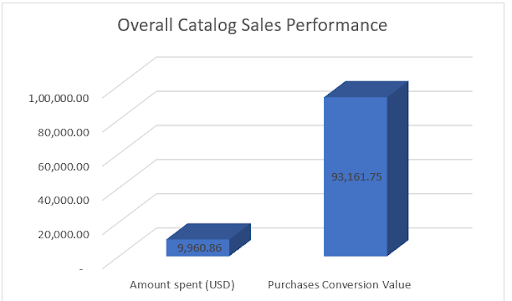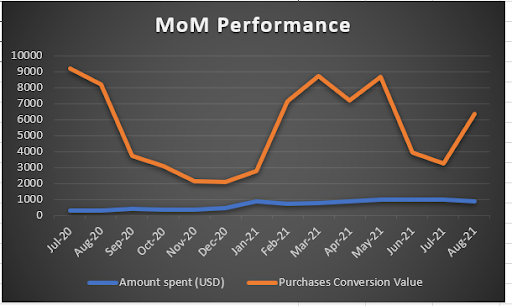We run marketing for a B2B eCommerce store that has been in business for over 25 years. They sell specialized industrial pest control products and gear. eCommerce revenue is a significant part of the company’s annual turnover and online marketing is paramount to their success.
Shopping campaigns play an important role in lifting their overall revenue and maintaining a good ROAS. We started using DataFeedWatch – a multichannel eCommerce platform – for all of our marketing channels (Google Ads, Bing Ads, and Facebook Ads) to be more hands-on with the feeds and ensure that the improved feeds led to better campaign performance.
After using DataFeedWatch, we started seeing stabilization and performance improvements across all 3 sales channels.
451% ROAS Increase with Google Shopping Ads
First, we started off with optimizing our client’s Google Shopping feed since this feed can be used as a base for other channels with similar feed requirements.
The problem
When we began marketing, we used the Content API feed. The performance was satisfactory during the initial months. But suddenly, after March 2019, the revenue went down significantly from Shopping campaigns.
As feed management and optimization abilities were very limited via the Content API, we made optimizations directly on the campaigns and in the settings, without seeing much improvement. We were running standard Shopping campaigns before Google introduced Smart Shopping campaigns, however, revenue was still the main concern.
The solution
To increase the revenue, we implemented DataFeedWatch to create and manage the Shopping feed with more control.
We removed the Content API feed and replaced it with the feed we created in DataFeedWatch.The feed was very healthy, better categorized for each channel, and very search specific.
Rules and filters were used to exclude nonprofitable products and low price products which the client was not interested in showing on the feed. Here’s how we did it:
The results
After implementing the feed created with DataFeedWatch, the performance improved significantly and immediately produced solid results. In both Standard and Smart Shopping, DataFeedWatch is a big win for us. It has contributed to an overall 451% increase in ROAS.

Bing ads
Next, we moved on to optimizing our client’s Bing ads. Bing currently has 14.3% of the PC market share and over 14.5 billion monthly online searches, so it makes it a worthwhile place to sell on.
Goal
Our goal was to achieve similar results with the Bing ads as we had with their Google Shopping campaign.
Solution
We decided to take the same feed we used for Google Shopping and apply it to the Bing ads as well since they have similar requirements. In order to make sure we achieved the same great results, we made additional optimizations to the feed tailored to Bing’s platform.
There were two main factors that contributed to improving the Bing Ads performance:
1. Improving product categoriesMaking the product categories as specific as possible helps searchers find the exact product they’re looking for. Bing accepts Google’s taxonomy, so we used the ‘google_product_category’ attribute for the feed rule.
Custom labels can be used to segment products into any criteria imaginable. For example, dividing products based on the profit margin allows for bidding more on products that will return the most profit. Here’s how the rule creation looks like in DataFeedWatch:
This allowed us to get the most out of our client’s ad spend budget and focus on the products with the most positive impact.
293% Performance increase with Facebook Product ads
We knew our client would achieve better results by expanding to more online channels, so we decided to start with Facebook ads next.
The problem
This was the first time our client had worked with Facebook Product ads, and they were unsure about how they would perform.
The solution
By using the ‘Copy feed’ feature in DataFeedWatch, we were able to use the same optimized feed that we did for Google Shopping. And just like with the Bing ads, when we launched the Facebook campaigns using DataFeedWatch, we immediately noticed good results.
We also were able to leverage our client’s product sales by setting up a rule to show when an item was discounted:
The results
Up until now, we’ve seen a 10x ROAS contributing to a 293% overall increase in performance. It’s still steadily growing irrespective of changes in the Facebook algorithm.

During 2020, we were spending less on the Facebook Product ads campaign, however, after December we started to slightly increase spending (as seen in the graph below).

Final thoughts
Overall, by using DataFeedWatch we’ve been able to automate the process of optimizing our clients’ product feeds and have gained more control over the changes we wanted to make. This has resulted in improved ROAS and catalog sales performance.
~Case Study by Jordan Brannon at CoalitionTechnologies.
